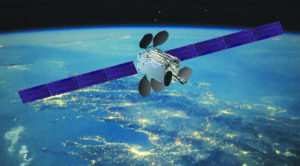Luxembourg and Virginia-based Intelsat declined to disclose terms of the contract with Sky Perfect JSAT, but said the satellite that provided capacity to U.S. and Asia Pacific customers is not needed following the 2018 launch of Horizons 3e to 169 degrees East.
Boeing-built Horizons 3e entered service in early 2019, completing Intelsat’s Epic series of six high-throughput broadband satellites in geostationary orbit.
The C- and Ku-band satellite operates under a joint venture that was cofinanced with Sky Perfect JSAT.
Tokyo-based Sky Perfect JSAT, which declined to comment, has also requested permission from Japan’s government to relocate the satellite once it regains control.
Lockheed-built JCSAT-RA launched in 2009 and Sky Perfect JSAT lists it as JCSat 12 on its website.
Separately, Intelsat is seeking permission from the FCC to extend a license for operating its Galaxy 16 satellite beyond Aug. 14.
The satellite was launched in 2006 to cover the Americas with C- and Ku-band services from 99 degrees west.
Galaxy 16, Horizons 3e, JCSAT-RA and other similar GEO satellites are designed with enough fuel to operate for around 15 years.
However, nascent satellite life extension services are changing this dynamic.
Northrop Grumman’s MEV-2 servicer docked with Intelsat’s in-orbit 10-02 satellite in April to add five years of operational life.
A year earlier, its MEV-1 predecessor lifted Intelsat’s defunct IS-901 satellite out of GEO graveyard orbit and back into service.
According to an Intelsat spokesperson, “December 2028 is the end of station-kept life for the Galaxy 16.”
This article was updated July 28 with information from Intelsat about Galaxy 16’s estimated end of station-kept life.



